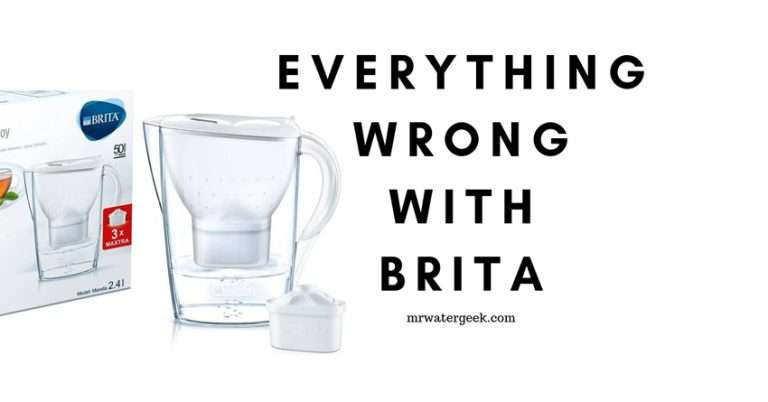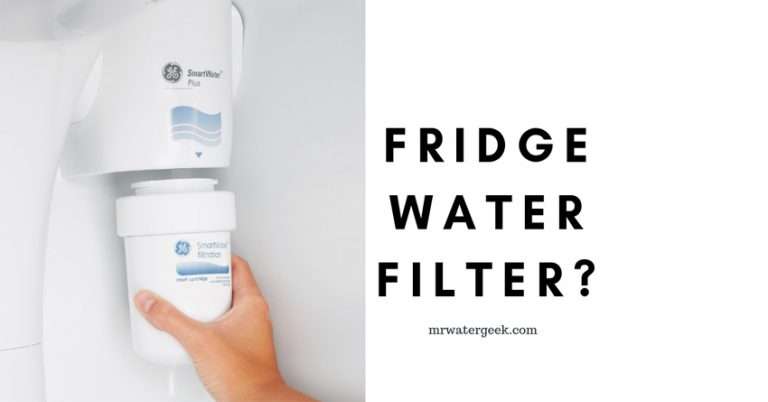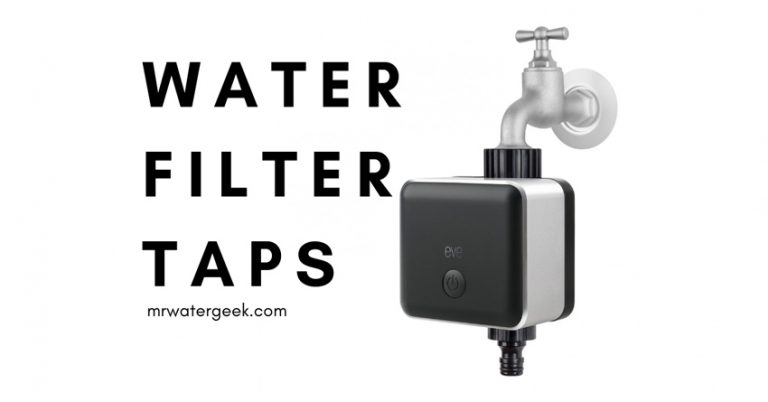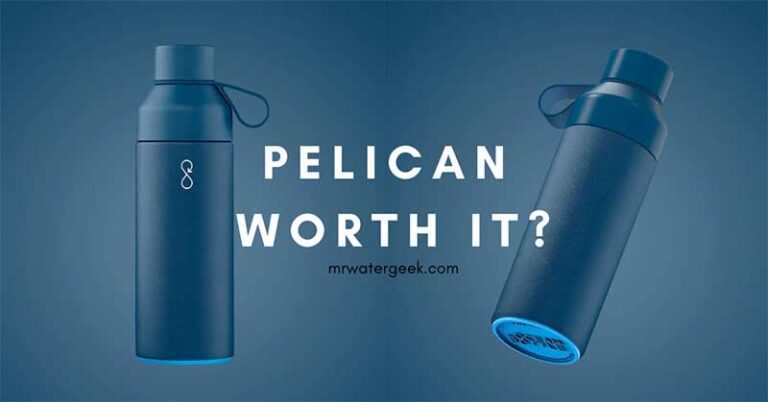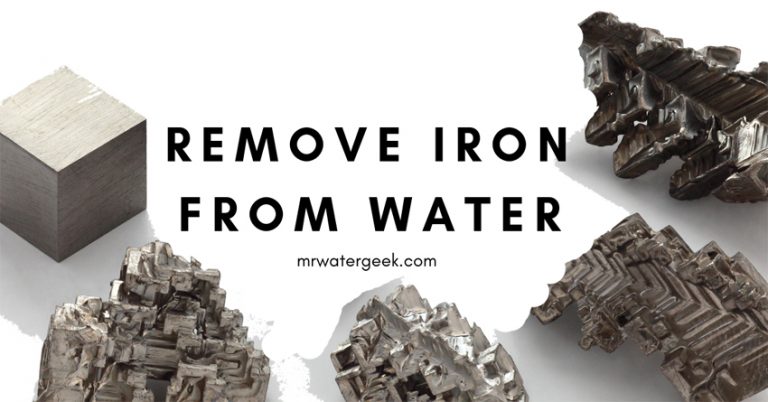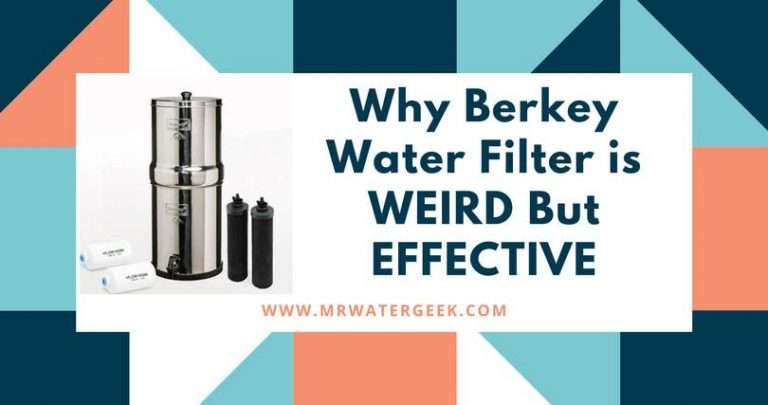How to Clean RV Water Filter Properly: Tips and Recommendations
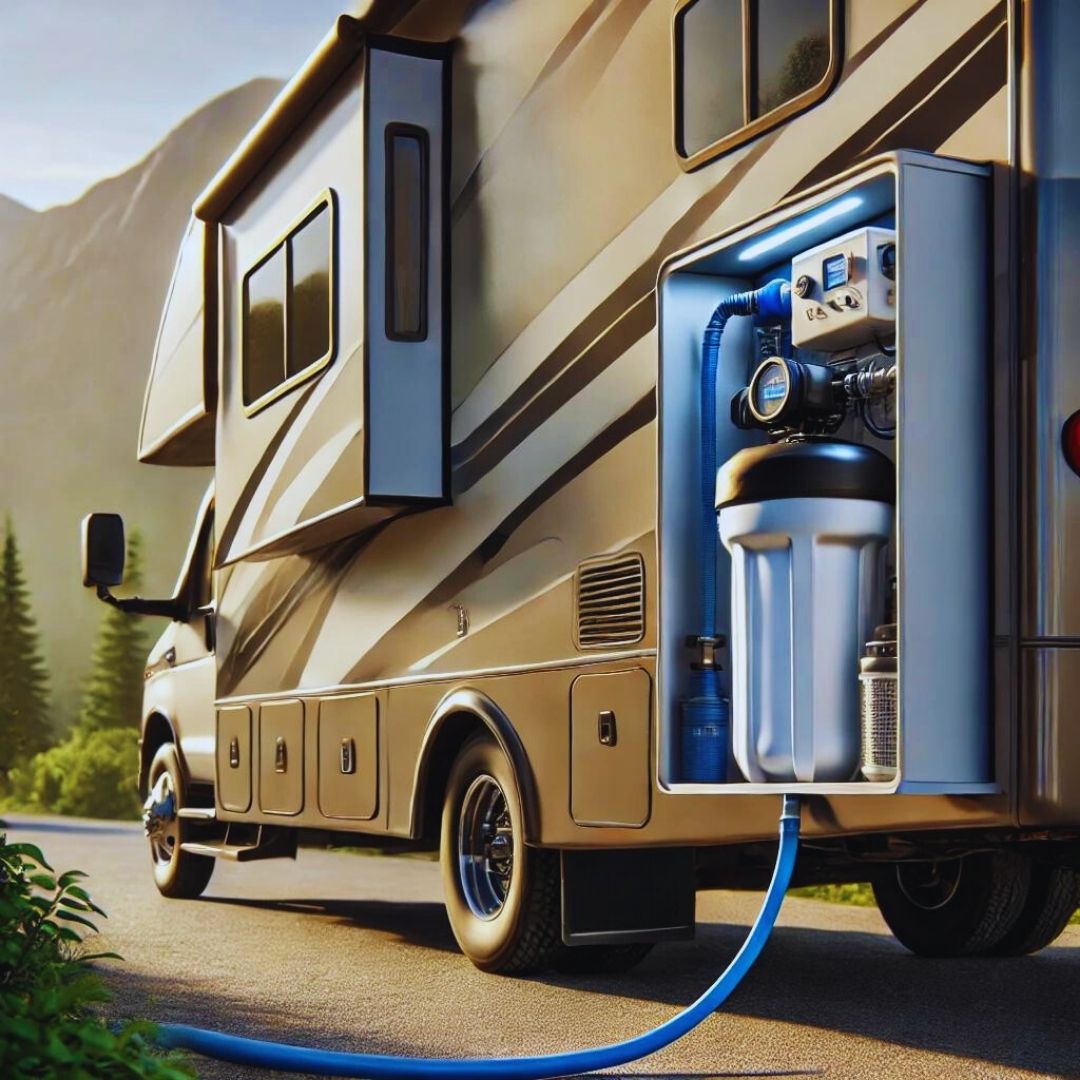
Consistent access to clean, fresh water is of utmost importance when traveling in a RV. In your RV’s fresh water tank and plumbing system, bacteria, algae, mold, and other microbes multiply very quickly without proper maintainance. Using the potentially contaminated water for various activities, including cooking, showering, dishes, and even brushing teeth, might be harmful to your health and can almost pretty much make the RV experience a nightmare.
It’s never any fun to deal with water that smells or tastes terrible. Plus, you run the risk of building up too many contaminants over time, which can clog your pipes, cause low water pressure problems, and more potential issues. This is why knowing how to clean your RV water filter should be one of your priorities for living in an RV.
Maintaining clean filters also assures uninterrupted supply of the cleanest and fresh water under any circumstances while on the road. By following basic tips and recommendations, RV owners can keep their water filtration system operating at its best. This guide includes RV water filter cleaning methods that help prevent bacterial and/or algae growth that could render filters useless.

How to Clean RV Water Filter Properly: Tips and Recommendations
RV systems, including water filters, are susceptible to contamination issues and require regular cleaning. Thorough cleaning can guarantee that your water filtration continues to work properly. With that said, let’s now focus on some quality tips and recommendations on how to clean your RV water filter.
Careful Preparation
First and foremost, let’s talk about safety. Shut off the onboard fresh water supply by using the valves located underneath the RV. This depressurizes the lines. Locate the drain for your particular RV’s fresh water tank and completely drain the tank by opening this. Clean the inside of the tank really well so there will be no residue left. Now that these lines and tanks are empty and totally safe, the filter will be accessible later on.
Thorough investigations have discovered that even trace amounts of residual water left in a system can support mold and bacteriological regrowth overnight. Here, time taken for complete drainage pays off in cleaner future filtering. Check also for any slow-draining line sections; addressing these on the spot avoids nasty later surprises.
Considerate Filter Removal
Examine the filter housing before installation. Look over it for any cracks, leaks past O-rings, or mineral buildup on seals; these are all things that could pose an issue down the road. Note the condition for preemptive replacement. Filters in and out quickly, with no hard twisting and forcing hence no damage to components: twist filter housing out counterclockwise, or find locking clips to remove.
Gently grip the cartridge when unlocked. Lift it straight up slowly so as not to bend the internal structures or bow out the micron-rated filter media. Place the housing aside and away from work areas. With the elevated cartridge tipped at an angle directed into a cleaning bucket or sink, trapped water pockets inside can completely drain out before further cleaning.
Pay attention while removing to note any spots showing unusual wear or effects from past use as well. Filters usually require replacement after a period of multiple cleanings anyway due to natural material degradation. Being observant helps determine if early replacement may now be best overall. Order new filters in advance of projected depletion to avoid water interruptions.
Thorough Rinsing
Rinse them with cool, clean water instead of hot water, which may lead to the warping of some filter housings. Apply manual agitation, flopping the cartridge back and forward or side to side, under a steady stream of water. This manual action helps loosen up debris pockets so that they release and flush away down the drain. Just be careful not to form the unit into a twist or some such, which has the potential for causing internal element shifts.
Allow several minutes for rinsing and periodically inspect the color of the draining water to view changes in clarity, which indicate the progress of the removal of the debris. Lumps or streams of dislodged deposits indicate a clear need for more rinsing. The stream need not be forcible; mere movement agitates the deposit better than stagnant soaking action alone. When the rinse water is consistently clear, proceed with the process of chemical soaking to obtain further cleaning of baked-on residues deeper than surface debris.

Chemical Soaking
Many manufacturers offer their own chemical soaking solutions that do work best with their materials. White vinegar is an affordable, non-toxic soaking agent available anywhere. Fill a clean container at least 1-2 inches above the fully-submerged filter cartridge with the chosen cleaner. Allow soaking undisturbed for 5-10 minutes as recommended by the product.
Vinegar, with its acetic acid, safely dissolves scales from minerals and the remains of algae growths. Comparable cleaning solutions can have other ingredients to effectively scour different types of deposits, but without the dangers of forming gases with other ingredients. Containers for storage of cleaned filters must be sealed separately, and filters must be rinsed and then rinsed again after cleaning. All of the cleaning agents must be rinsed from the filter; then, of course, all must be dried before being reinstalled.
Watch soaking cartridges closely and never allow them to stay submerged longer than the maximum provided, as this can cause wear on internal parts that are resin- and/or other porous media-bonded. Mix used soaking fluids well with lots of fresh water. Take out the cartridges before scrubbing and final rinsing. Dispose of used soaking liquids from emptied cartridges responsibly, following local environmental guidelines. Both careful attention to product directions as well as common sense protect your health and the health of neighboring ecosystems.
Scrubbing Stubborn Spots
After soaking, use a soft-bristled child’s toothbrush reserved only for filter cleaning to lightly work away incrustations from crevices and seals. The bristles bend and flex under light pressure to scrub lightly without causing damage, in contrast to steel brushes. Add sparing amounts of water to the filter while scrubbing only if necessary in a life or death situation. Excess pooling or dripping runs the risk of tracking residue into equipment later.
Gently scrub around creased gasket details to prevent displacement of any seals and integrity of filtering abilities or leak protection down the road. Also, look for signs of minerals that have stuck in hard-to-get-to areas. Give these areas a little extra time without being overly aggressive because the chemical cleaners will do most of the breakdown for you. Over time, short cleans are far better than long deep-scrubbing cycles.
Rinsing Completion
Once evidence of deposits adhering obstinately has ceased, prepare filtering for a final thorough flush. Return to a clean rinse bucket or sink and last-wash in cool tap water. Agitate and flush for a few minutes, stopping from time to time to check water discharge for the presence of any trace of remaining vinegar, cleaner, or scrape-loosened residue. Residual chemicals could compromise future filter integrity or risk later introduction into the onboard water supply.
Run through the rinse until crystal clear water is coming out, meaning there’s no smell or similar indication of any leftover agents. Improper cleaning hosts costly risks, such as regrowth of mold or non-filtering plumbing down the line. Extra time taken here to fully remove contaminating materials puts those concerns at rest during later filter maintenance. Now that the filters have been fully rinsed, they need to be readied properly for drying before storage.
Best RV Water Filter Systems
ZeroWater Filter Replacement Pack
The ZeroWater replacement pack revolutionizes filtration with its square-shaped polypropylene block, delivering four advanced filtration stages. This dynamic design and sturdy housing structure maximize efficiency and performance.
This housing structure further incorporates an intuitive unclipping mechanism that makes it easy to separate the individual filter modules when periodic maintenance is required. Property owners will appreciate the small size, in that it makes it easier to thoroughly clean the structure and wipe away any surface residue deposits that tend to accumulate in clear view over time.
Furthermore, the removable filter blocks are ideally suited for effective cleansing under a gentle stream of cool rinse water. Flowing fresh water through the mediums proves adept at naturally dissolving and purging away collected debris particles or mineral deposits that naturally bond within the substance, to provide continuous protection of valuable drinking sources.
Big Berkey Gravity Filter
The Big Berkey system, with its large double-walled stainless steel chamber, stands up to heavy use. Its gravity-fed design thrives on regular deep cleans, guaranteeing reliable, long-term performance.
Mineral sheets or algal matter naturally sloughing away from interior surfaces over months and years of purification don’t stand a chance against an able-bodied swish and rinse cleansing protocol. This kind of removal restores like-new luster and performance capacity without requiring harsh chemicals.
Dedicated cleaning also covers revitalizing the utility of Big Berkey’s dependable carbon block elements through gentle agitation in running water, easily dissolving any bonded deposit layers that might impede pristine flow.
For more, see my article on how Big Berkey compares to others such as Alexapure
Clearsource CS9000
The Clearsource CS9000 is one of the top-rated canister-style RV water filter systems. Well-built with generously bulky filter housings, this system is refreshingly easy to maintain, thanks to the company’s trademark easy-to-open design.
The Clearsource CS9000 filtration offers a high level of filtration through a three-stage process, a process that utilizes sediment, carbon, and particulate filters to thoroughly clean water from various sources. Featuring extra-large canisters capable of handling high flow rates of up to 6.5 GPM, replacement is easy with the quick screw-on and screw-off design of the canisters.
Customizable warm soaks, when combined with occasional mild scrubbing, help cut through stubborn limestone surfaces or biofilm clusters hidden in creviced areas, restoring the peak protection capabilities between the filter updates.
Culligan RV Filter
The Culligan RVF-10 RV Water Filter System is a versatile canister-style option that installs externally using the included hose connection kit.
Utilizing a granular activated carbon filter cartridge with a 1 GPM flow rate, it filters all water entering a recreational vehicle. This reduces unpleasant chlorine tastes and odors commonly found in city water sources, providing clean, filtered water for all usage needs.
Owing to its smartly compact plastic material and thoughtful housing mechanics, Culligan RV’s canister filter proves especially fleet of foot when quick disassembly is essential to flush beyond the usual surface debris caked inside over seasons.
Gentle water rinses paired with periodic chemical cleaner dipping, finish deep, thorough cleaning, removing any mineral scum evidence that inevitably accrues to impact flow rates in lengthy protection cycles. Repeating the meticulous scrubs restores peak capabilities with minimal fuss.

Camco EVO Premium Filter
The Camco Evo RV Inline Water Filter uses a multistage process to provide highly effective water treatment to recreational vehicles. It uses a 5-micron porous shell that traps large particles, as well as layers of KDF and GAC, carbon-reducing a wide range of contaminants, ensuring it is certified lead-free. It’s also made in the USA and meets the highest quality and safety standards.
Furthermore, the compact plastic and blend construction durability of the exterior, simple setup, and inclusion of all filter housing, connection hoses, and cartridges guarantees simple and complete setup. With direct connection of water hoses, users can take advantage of convenient, whole-home filtration with special emphasis on keeping away bacteria for a full season, including during storage.
The Camco Evo RV Inline Water Filter delivers cost-effective water quality safeguard for RVs on the road through premium replaceable cartridges, providing contaminant-free water supply.
Plus, much like other cartridge designs, the Camco EVO set up remains loyal to optimal cartridge unlocking for easy clean access, offering simple flushing out and neutralizing of deposits. Turning allows more intensive reconditioning soaks as needed to return to factory conditions the precious deposits of KDF and carbon between cartridge exchanges. Light scrubbing finishes the job; the slick protection is restored shortly after, enhancing chemical soak baths.
FlowPur/Wattts Filter
The FlowPur RV water filter is a cost-effective inline water filtration system that provides excellent water filtration with the extra advantage of fitting into each replacement water filter cartridge for RV water filtration systems.
It connects directly to fresh water inlet hoses to treat all water entering the motorhome or travel trailer. It effectively uses activated carbon block filtration to remove unpleasant tastes and odors caused by chlorine and other impurities found in many city water sources, helping to give cleaner, purer drinking water.
Also noteworthy is the quick and simple installation. The cartridge easily screws into the compatible FlowPur filter housing unit, while replacement every 2-3 months based on water usage volume keeps ongoing costs low at around $15-20. This makes the FlowPur RV water filter a more budget-friendly basic filtration option compared to other canister systems. However, it still improves water taste from various campground sources.
FlowPur is also NSF certified, ensuring filtration meets standards for trace contaminant removal from RV water systems.
This Flowpur and Watts cartridge usage is defined well by simple installations, but their simplicity goes further yet to reach direct, screw-removing for jet-powered debris purging and visible, dispersed mineral veil dissolving on interiors. Such simple cleaning conserves maximum waterways and extends intervals between necessary filter head component exchanges.
Neo-Pure Sediment Filter
This cost-effective pre-filtration solution is provided by the Neo-Pure MB-25098-05 Polypropylene Sediment Depth Filter. It occupies the small available space of 2.5″ × 2.5″ × 9.85″, colored white.
With pure and durable polypropylene and high sediment-holding capacity, it’s compact and can be commonly used as pre-filter for a reverse osmosis system or post-filter for a granular activated carbon filter. This purifier can remove sediment and dirt particles before they plug carbon media pores or other treatment media and components. This would further ensure that the life of all other purification components downstream is guaranteed.
In addition to its compact size, it is lightweight, weighing under 5 ounces, making for easy installation and replacement. No batteries or other power source are needed for a self-contained, reliable pre-filtration source of protection for expensive downstream filters and components in multi-stage water systems.
Compact pre-filters from Neo-Pure, on the other hand, already go on to ensure sediment loads remain properly quenched between those low-cost swaps or less frequent surface cleans. This ensures costlier downstream mediums avoid premature clogging in multistage rigs, thereby returning perfected performance throughout complete systems.
Keeping your RV water filter clean ensures you have access to clean and fresh water
By following the tips covered here, RV owners can feel confident their water filters are regularly deep cleaned and sanitized using simple methods. This prevents bacterial overgrowths and extends cartridge life up to manufacturer ratings. Combined with periodic whole systems sanitizing as weather and use dictate, RV residents can feel secure in the safety and quality of their onboard water supply.
For more information on beneficial water therapies and all things around benefits of water, stay tuned to my blog. I have quality reviews of different water purification products that you can find very beneficial. Some of the reviews you might want to check out include Aquatru review, Aquasana Water Filter review, and so much more
I’m also always available to give recommendations, reviews, and health information around water. If you found this particular post helpful, you might want to check out my posts on best portable water filters, best type of water for health, and pros and cons of gravity water filters.
Stay hydrated,
Shashank Varma (Mr. Water Geek)

